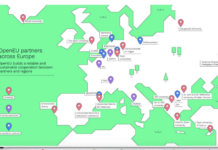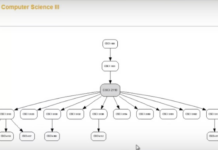Negrea, S. (2013) Colleges breaking new ground in distance learning University Business, August
This excellent article sets out how four states in the U.S.A. – Georgia, Wisconsin, Kentucky and Florida – are co-ordinating their higher education online offerings from state institutions. Here are some of the things they are doing, with similar examples of my own from Canada:
Online course portals for student
The following provide one-stop, single portals for online courses and programs at a post-secondary level:
- Wisconsin,
- Georgia,
- Florida, through the Florida Virtual Campus.
“We are a one-stop place for students to go to get their services, rather than have them hopping around to different websites,” says Donald Muccino, executive director of FLVC.
There are probably many other states in the USA with similar portals – please let me know and I will include them.
In Canada:
- Ontario, through the Ontario Online Learning Portal for Students
- Manitoba, through Campus Manitoba.
- Saskatchewan, through Saskatchewan Distance Learning
- Québec, through CLIFAD’s Portail de la formation à distance au Québec
Alberta lists mainly two-year college online courses and programs through eCampus Alberta. The universities list their courses individually.
New Brunswick has a single, integrated system for two year colleges, and provides a listing of all its online courses. However, the universities list their courses individually.
Nova Scotia is similar, having a single portal for two year college online courses, but with universities listing their courses individually.
In Newfoundland, Memorial University and the College of the North Atlantic have their own portals for online learning.
BCcampus used to have a single portal, but no longer offers this service. CoursesBC lists all courses available from BC provincial institutions, but does not provide a separate portal for online courses, nor a ‘search-by-mode-of-delivery’ option.
In Canadian provinces, there may be some institutions or individual departments that do not participate or make available listings of their online programs to these common portals (and sometimes not even within their own portals), but for Ontario, Manitoba, Saskatchewan and Québec, the listings seem pretty comprehensive (any corrections or comments on this list will be welcome).
Flexible access through competency-based learning
From September, students in the University of Wisconsin Flexible Option program will be able to start on their degrees at any time and progress at their own pace after completing assessments in their courses. The program allows students to enroll in a MOOC and then take a competency exam to enable transfer to a related course in the Flexible Option program. Students may also have acquired skills through prior workplace or military training.
The Kentucky Community and Technical College System has developed a set of modular, three- to five-week online courses called the Learn on Demand program. Students can enroll in a modular course at any time during the year at one of the state’s 16 two-year colleges. After completing this mini-course and taking a competency exam, they could progress to the next module, accumulating credits toward a degree. For a more detailed description of this program, see Contact North’s gamechangers series. See also Contact North’s report on the Western Governors’ University.
I know of no similar programs in Canada – any suggestions?
Joint or core programming
The University System of Georgia (USG) created eCore, which allows students to take required introductory courses online. Instead of offering different versions of English composition at each of its institutions, USG officials decided to create one standard online course for each of its core classes. Faculty teams developed the online courses, and a required two-week certification class was created by the eCore administrative unit at the University of West Georgia for instructors who wanted to teach in the program.
USG in 2007 launched seven online master’s of education programs in collaboration with 17 higher ed institutions across the state, because teachers within the state were opting for online courses provided by for-profits or other out of state providers.
The nearest to this in Canada is the development through BCcampus of common first-year e-textbooks to be shared by institutions across the province, although this is still to roll out, and it is not yet clear how many institutions will participate. BCcampus also offers a number of shared services to institutions, such as LMS (Moodle) hosting and support, and online webinar services. Contact North also offers extensive audio-conferencing and web conferencing services to other institutions in Ontario.
Shared learner support
The Florida Virtual University is working towards offering a 1-800 hotline for (potential) online students with 24/7 advising on online programs, providing advice on financial aid, and on how to access library holdings from any state institution.
Again, I don’t know of any Canadian province that offers this service for potential online students, although BCcampus provides information about online student services – admissions applications, course directory, course record and transferability guide, transcript exchange, virtual library – using a secure connector system that accesses real-time student data. This data exchange system also allows institutions to generate up-to-date reports regarding recruitment, applications, learning resources and more. Because database duplication is eliminated, both cost and time are saved.
Credit transfer
In Florida, a real-time degree audit allows students to submit completed courses and, within minutes, receive an assessment of what they need to earn their degree. Florida’s common course numbering system, which it adopted in the 1960s, helps speed up the audits. At every college and university, for example, PSY 2012 refers to Introduction to Psychology, which means students can easily transfer credits for common courses from one institution to another.
British Columbia in Canada has a very flexible credit transfer system in place, enabling transfer of credits not only across universities, but also from college to university programs, but this is not exclusive to online courses.
Fostering faculty buy-in for distance education
One common role for these four U.S. state systems is to provide credibility for online learning and to encourage faculty buy-in.
Contact North in Ontario is unique in that it has an extensive portal for faculty and instructors that provides a range of information and services. BCcampus also provides support for faculty development in online learning through supporting workshops and conferences.
Benefits
An April 2013 report written by Rachel Fishman, an education policy analyst at the New America Foundation, stated that there are considerable benefits when state systems follow a more integrated approach toward building online education programs. These collaborative programs work to create “something that looks less like an unorganized collection of internet-based classes, and more like a true public university built around the tools of the information age—a kind of State U Online,” Fishman wrote.
Challenges
In Canada, the attempt to co-ordinate online learning at a provincial level seems to ebb and flow with the changes in provincial politics and in particular with changes in Ministers responsible for post-secondary education. Over the last couple of years, Ontario in particular has been grappling with this issue, even though there have been three different Ministers in 18 months. Ontario now seems to have dropped the idea of an Ontario Online Institute, and is now veering towards an Ontario Online Initiative that looks to collaboration between the 24 universities and 24 colleges within the system, but leaving it to the institutions themselves to come up with viable ideas or consortia, although the government has announced it will provide $42 million towards any successful proposal from the system as a whole.
On paper, it makes a lot of sense for institutions to share services such as learning management systems, and even marketing and student services. It also seems to make sense for institutions within a jurisdiction to jointly develop and share programs. How many online Introductions to Psychology does one province need? Could two or three institutions offer specialist online masters programs where one institution has insufficient resources to do so?
In practice though such attempts at reason run up against the independence and competitiveness of individual institutions, particularly the universities. There is a strongly defined pecking order that makes chickens seem the model of collaboration in comparison, but which makes it difficult for universities to work together. No-one trusts the government these days but leaving it to the institutions to work something out is not likely to lead to success, either.
Well, here’s some advice for the Minister, based on experience from the four U.S.state initiatives listed above. You need to create or adapt a neutral, intermediary or ‘meta’ organization that has the technical knowledge, a certain amount of independence, but also a good working relationship with all the institutions, to do the hard work needed to make these things happen. There is of course going to be resistance to creating such a body, because the institutions (and particularly the universities) don’t want any money diverted away from their core activities.
However, it’s not something the Minister or the Ministry bureaucrats either should be running. It needs expertise and people with time to call meetings, manage budgets (however modest), and seek consensus. Above all their main purpose is to co-ordinate and obtain as much collaboration as possible. In most of Canada’s provinces there are existing ‘meta-organizations’ that could do this, with a fresh and clear mandate and some extra resources. Examples are BCcampus, Contact North, eCampus Alberta, etc.
The potential benefits of better co-ordination (not just collaboration) are considerable, as the examples above show. A meta-organization can be invaluable in stimulating and promoting innovation and collaboration in online learning, to the benefit of both students and the tax payer. Otherwise we are still in the Wild West in operating online learning at the provincial level.
Reference
Fishman, R. (2013) State U Online Washington DC: New America Foundation










 Dr. Tony Bates is the author of eleven books in the field of online learning and distance education. He has provided consulting services specializing in training in the planning and management of online learning and distance education, working with over 40 organizations in 25 countries. Tony is a Research Associate with Contact North | Contact Nord, Ontario’s Distance Education & Training Network.
Dr. Tony Bates is the author of eleven books in the field of online learning and distance education. He has provided consulting services specializing in training in the planning and management of online learning and distance education, working with over 40 organizations in 25 countries. Tony is a Research Associate with Contact North | Contact Nord, Ontario’s Distance Education & Training Network.

